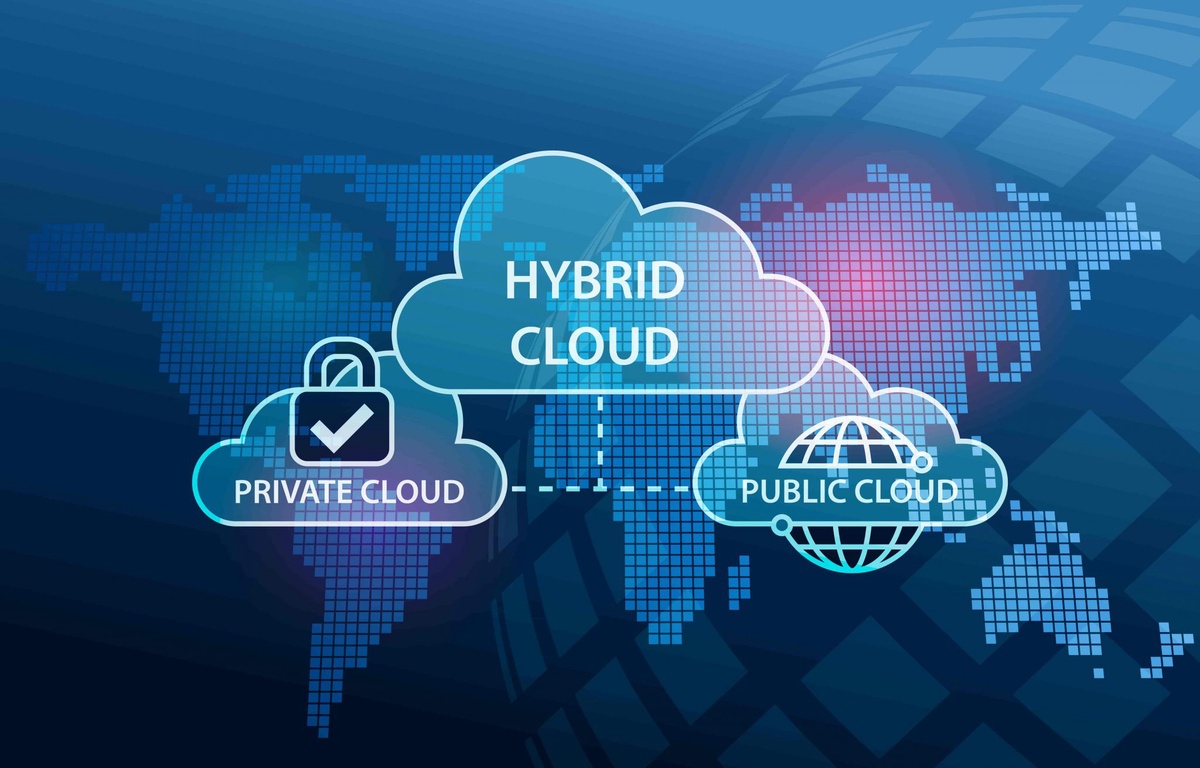The freedom of public cloud services and the control of private infrastructure are combined in hybrid cloud, which has become a game-changing solution for businesses. This cloud model was developed in response to the shifting demands of businesses, which included the need to maintain some workloads locally while taking advantage of cloud computing's advantages.
The most typical hybrid storage cloud use cases, together with detailed information on each use case's requirements and benefits, are listed below:
Before we move on, let’s explain
What is Hybrid Cloud?
In most cases, the phrase "hybrid cloud" refers to fusing your on-premises infrastructure with one cloud provider. By establishing a hybrid multi-cloud, you may also combine on-premises infrastructure with several cloud service providers. You can do this to integrate the functionality and cloud services of many cloud providers.
1: Disaster Recovery and Data Backup
For businesses, hybrid cloud solutions provide a reliable data backup and disaster recovery (DR) solution. Enterprises achieve business continuity even in the event of a disaster by duplicating crucial data and applications to the cloud.
Hybrid clouds enable speedy and dependable data recovery in the case of a data loss or system breakdown, minimizing downtime and enabling uninterrupted operations.
2: Peak Load Management
Utilizing a hybrid cloud storage to supply resources in the public cloud when demand is high can help control peak loads. Because of the potential cost savings, this can assist you in preventing overprovisioning of resources in the private cloud.
During the holiday season, for instance, you might see higher demand for its website and might need to make additional public cloud resources available to manage the extra traffic. As a result, you wouldn't need to overprovision resources in the private cloud and could scale its website up and down as necessary.
3: Testing and Development Environment
Several groups are working on a variety of development and test initiatives. The development teams must perform tests and make adjustments without sending the finance teams large invoices. One of the most popular uses for hybrid cloud solution is to offer an environment where testing may be carried out as frequently as required to create a faultless product.
Due to two causes, development and test environments in the cloud are highly popular.
- First of all, it is inexpensive and the cloud enables pay-as-you-go so that you only pay for what you have used.
- Second, teams may provision resources rapidly, whereas running such environments on-prem takes a lengthy procurement procedure for the requisite hardware and software.
4: Edge Computing and IoT Integration
Enterprises can take use of edge computing capabilities thanks to hybrid cloud storage solutions, which bring data processing and analysis closer to the data itself. This is especially helpful for IoT deployments since real-time processing is needed for edge-generated data.
With hybrid cloud, businesses can gather and analyze data close to where they are, taking advantage of low latency and lower bandwidth needs. Furthermore, they can easily interface with cloud-based services to gain access to advanced analytics tools, providing insightful data and promoting reasoned decision-making within the enterprise.
5: Content Delivery Network
A content delivery network (CDN) is a collection of geographically distributed servers working together to efficiently and quickly provide content to users.
In a hybrid cloud system, CDN resources can be set up close to the users in the public cloud. By cutting down on the content's journey time, this can enhance the performance of the CDN.
For instance, a business with customers in both Europe and Asia may set up CDN resources in the public cloud there as well. The performance of the CDN would be enhanced by ensuring that users in both regions receive content from a server that is close to them.
6: Cloud Services Brokeraging
Another use case is what you might refer to as " hybrid cloud services brokering," also known as "self-service IT," which is a method of automating IT operations to give your technically illiterate end users the choice of push-button deployment to public and private clouds, virtual servers, and bare-metal servers without the involvement of operations staff.
You might restrict your end users' access to a certain public or private cloud depending on the use case, but a hybrid cloud architecture offers the most flexibility for serving your lines of business.
7: Compliance and Data Sovereignty
Enterprises must adhere to strict compliance standards for data protection and privacy in highly regulated industries. A useful method to overcome these issues is to use hybrid cloud infrastructure solutions. You can maintain control over your vital data and assure compliance with data sovereignty laws by deploying private infrastructure for sensitive data and workloads.
In addition, by using public cloud services for non-sensitive processes, they may take advantage of the cloud's scalability, cost-effectiveness, and innovation while still adhering to regulations and ensuring the greatest standards of data security.
8: Temporary Processing Power
In the past, managing temporary projects required organizations to invest significantly in onsite IT infrastructure. This can be very expensive, particularly if the initiative fails.
Organizations can use hybrid cloud servers to allocate public cloud resources for transient projects. This is a far more economical option because businesses only pay for the resources they really utilize.
In The End
Well, hybrid cloud can put you in the position of a business that uses cloud without giving up on-premise data centers. To overcome your cloud anxiety just for the promising future of your business, evaluate, analyze, and make plans.


No comments yet